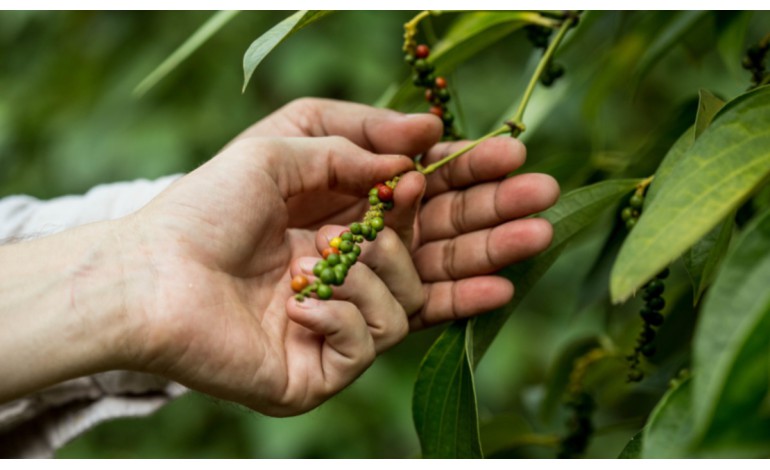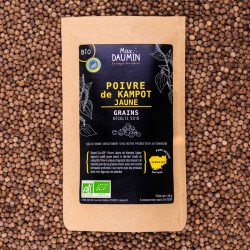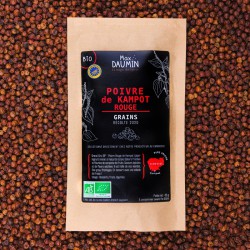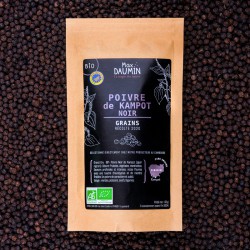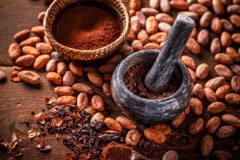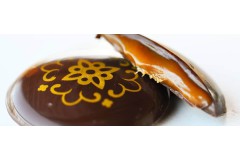A beginning in the Middle Ages
Like all peppers in the world, from the genus piper nigrum, Kampot pepper originally comes from Kerala in India. It is in the Western Ghats Mountains (western Kerala) that the botanical origins of pepper plants lie.
In the 13th century, it was imported by the Chinese to Southeast Asia, where it enjoys ideal climatic conditions and an ideal terroir for cultivation. The first crops were grown on the northern island of Sumatra, then drifted to the Cambodian coast.
Zhou Daguan, a Chinese diplomat renowned for his accounts of Cambodian customs and the complexities of the Angkor temples, first described the region in the 13th century. Pepper cultivation was essentially a subsistence crop.
Productive momentum under the French protectorate
At the end of the 19th century, the French colonized part of Southeast Asia, creating Indochina. Cambodia came under French protectorate on August 11, 1863.
The French established an intensive pepper-growing system in the Kampot region. They gave it the name “Kampot pepper” and managed to produce over 8,000 tons of pepper a year. In France in particular, this pepper made its mark. By the 1920s, it was already considered to be the finest pepper available. A precious reference that had to be found in every Michelin-starred restaurant.
Political instability and global competition eventually severely undermined this model. By the 1960s, production had dropped by more than half (3000 tons / year).
From decline to worldwide recognition
In the 1970s, the Khmer Rouge regime regarded peppercorns as a symbol of colonialism. What's more, they considered that pepper contributed nothing to either the worker or the nation. Only rice was vital. So they forced farmers to grow rice instead. Pepper plantations were uprooted.
It wasn't until the late 90s, long after the Khmer Rouge had lost power, that local farmers, many of whom had generations of pepper growing in their veins, returned to their roots. At the time, farmers were impoverished, so they turned to what they knew: the same farming practices that had run in their families for generations, and almost all of them did so on small plots of land.
From one pepper plant, 3 more can be propagated by cuttings each year. The time taken to recreate plantations was particularly long. It took more than 15 years for Kampot pepper production to support several families.
In the 2000s, a handful of passionate growers decided to revive Kampot pepper cultivation. Supported by the Espelette pepper producers' union and a local NGO, these growers were awarded the IGP (Protected Geographical Indication) in 2010. In 2016, Europe also awarded them PDO (Protected Designation of Origin) status. This is true recognition for this precious pepper.
Its terroir, climatic conditions and the care taken by producers make this pepper one of the world's benchmarks.
The Association pour la Promotion du Poivre de Kampot (KPPA) is responsible for ensuring compliance with the very strict specifications governing production and marketing. The authenticity of Kampot pepper is further validated by a logo. This must appear on your container, certifying its origin.
Kampot pepper can be found in a variety of maturing and processing stages: green pepper, black pepper, white pepper, yellow pepper and red pepper. Each of these stages brings a different strength and aromatic expression.
Max Daumin
Max Daumin spices
Gold 2017-2018 Silver 2020 - 2021 Bronze 2019 | Trophée national de l'épicerie fine
Artisan Producer of the Collège Culinaire de France 2021
Where does Kampot pepper come from? History and origin.
Posted by
Max Daumin
11/09/2021
Articles by Max Daumin
